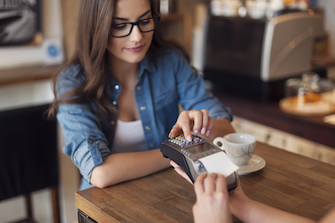With all the talk about how Apple Pay will turn us into a cashless society, a recent report by the Federal Reserve Bank of San Francisco found cash still accounts for 40 percent of transactions. Before you start using your phone to pay for everything, realize that cash is still very much king. But when is it best to use cash and when is it best to use credit? Here are some tips on the best uses for each kind of payment:
Use cash for essentials. Using cash for groceries, gas, and household items will help you live within your means. Personal finance writer Kristin Wong of Brokepedia adopts Dave Ramsey’s “Envelope System” whenever she notices her spending getting out of control. “It works wonders for me to pay for purchase with something tangible,” Wong explains. “Once the cash is gone, you’re done. You can physically see how much you’ve got left, and that’s helpful for self-control.”
Use credit for big-ticket items. Jason Vitug, founder of the crowd-sourced financial site Phroogal, suggests using a credit card that earns reward points. That way you can get some added savings with cash back or rewards. Just be sure to pay off your balance at the end of the month. Some credit unions even offer apps like CardNav™ by CO-OP, which allows you set spending limits and turn cards on and off to help you stick to your budget.
Use P2P payment apps for shared expenses. Digital wallets such as Venmo and Google Wallet are great for splitting costs with friends on dinners, shared bills, and joint gifts. For instance, Sofia Durrani, a financial blogger at CaviarAndQuarters.com, used Venmo as a payment option for collecting money to make T-shirts for a leadership development program.
Stay in the green by planning which mode of payment you’ll be using for different expenses. Staying organized, monitoring your spending, and sticking to your plan are the keys to being financially savvy.






